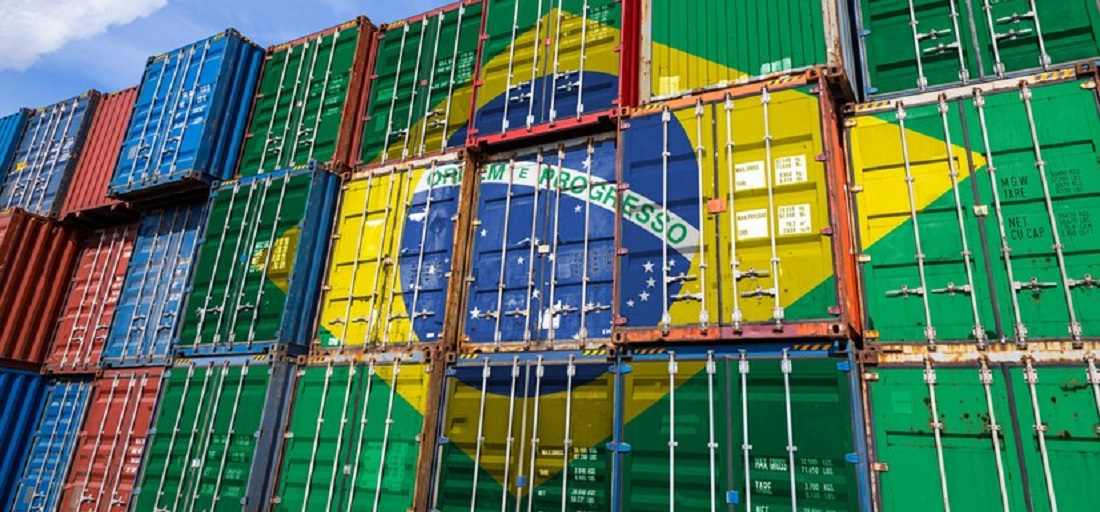
New DataLiner Data: Logistical Challenges Impact Maritime Container Trade in Brazil
Dec, 07, 2023 Posted by Gabriel MalheirosWeek 202345
Brazil’s international container trade has been going through troubled waters in terms of logistics, with droughts affecting rivers in the northern region and floods wreaking havoc in southern ports, combined with international issues such as the Russia-Ukraine war and a drought in the Panama Canal, among other challenges.
Against this backdrop, how have Brazilian exports and imports via containers performed? Data recently released from Datamar’s Business Intelligence team indicate that, from January to October 2023, the country exported 2,281,920 TEUs, a volume 2.6% lower than the same period last year.
Despite this, the performance was positive in October, showing a 3.4% growth compared to October 2022 shipments.
The chart below displays total Brazilian container exports throughout the first ten months of the year, starting from 2019. The data is from DataLiner.
Container Exports | Jan-Oct | 2019 – 2023 | TEU
Source: DataLiner (click here to request a demo)
China continues to be the primary destination for Brazilian products exported via containers, with a 7.2% increase in the year-to-date comparison. On the other hand, shipments to the United States fell by 16.8% in the same period.
Meat remains the most exported commodity via containers this year, with a volume 3.2% higher than the January to October 2022. A notable highlight is the 77.8% increase in sugar exports via containers in the same comparison.
In contrast, Brazilian container imports grew by 3.7% in the first ten months of 2023 compared to the same period in 2022, with 2,239,254 TEUs handled in this direction. Considering only the month of October, there was a 7.61% decline in cargo imports.
The chart below displays the total Brazilian container imports throughout the first ten months of the year, starting from 2019. The data is from DataLiner.
Container Imports | Jan-Oct | 2019 – 2023 | TEU
Source: DataLiner (click here to request a demo)
Similar to exports, China (+13.7%) and the United States (+5.2%) are Brazil’s main trading partners in container imports from January to October.
Regarding imports, plastic was the commodity with the highest volume received between January and October 2023, with a quantity 17.7% higher than the same period in 2022.
Plate
Argentina saw a 7.1% decline in container exports between January and October 2023 compared to the same months in 2022. In October, the fall was -6.9%.
Argentinian imports fell by 10.28% in the cumulative ten months of the year compared to the same period in 2022. In October, the drop was 17.7%.
In Uruguay, container exports grew by 3.31% in the cumulative first ten months of the year compared to the period from January to October 2022. Considering only October, Uruguayan exports grew by 17.26% compared to October 2022.
Concerning Uruguayan imports, there was a 6.7% increase in container cargo receipts in the first ten months of 2023 compared to the same months in 2022. In October, there was a slight increase of 2.26% in imports compared to October 2022.
The logistical challenge is expected to continue for the coming months, with low water levels in the Panama Canal, tension between Venezuela and Guyana, and climate-related issues.
-
Trade Regulations
Nov, 01, 2022
0
European Union rules out reviewing Mercosur agreement
-
Steel and Aluminium
Sep, 13, 2022
0
Ferrous scrap export economy rebounds in August despite uncertainties
-
Shipping
Oct, 16, 2023
0
Aliança Navegação Suspends Shipping Services to Manaus Due to Low River Levels
-
Ports and Terminals
May, 28, 2024
0
Dredging of Suape’s Outer Channel Completed

